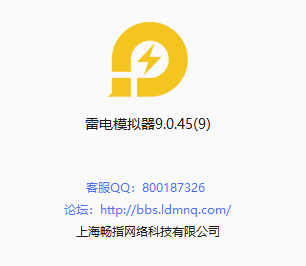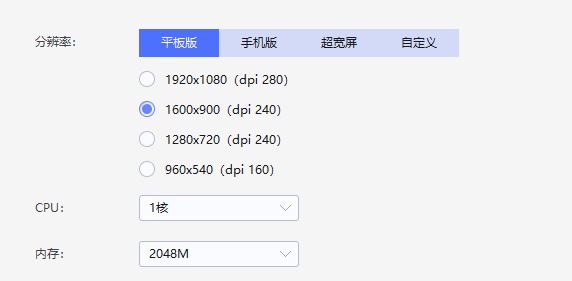官方有计划升级native v8么,这边模拟器测试 v8 升级后 js 运行性能会有很大的提升 前面雷电模拟器跑 polybooljs 逻辑 100ms现在只要跑1ms 基本和浏览器是一个性能
在问个问题 怎么样配置gn编译参数才能把libinspector和libv8_monolith分开编译成静态库,现在用v8_monolithic = true 只能编译出一个libv8_monolith 然后libinspector内容也会在这里面

官方有计划升级native v8么,这边模拟器测试 v8 升级后 js 运行性能会有很大的提升 前面雷电模拟器跑 polybooljs 逻辑 100ms现在只要跑1ms 基本和浏览器是一个性能
在问个问题 怎么样配置gn编译参数才能把libinspector和libv8_monolith分开编译成静态库,现在用v8_monolithic = true 只能编译出一个libv8_monolith 然后libinspector内容也会在这里面
给你顶一下,不明觉厉
帮顶一下,请官方关注
帮顶一下,请官方关注
v8.dev版本不是才到9.9么?
大家都顶一下 
20感觉提升很多了,不知道机型是什么级别的。
interface RegionInfo {
region : Vec2[],
parentCount : number,
}
// 合并用户点击产生的多边形
@ccclass('PolyBoolComponent')
export class PolyBoolComponent extends Component {
@property
DIG_FRAGMENT = 30;
@property
DIG_RADIUS = 30;
_segment:PolyBool.Segment
regionsDirty: boolean = true;
start() {
}
reset() {
let size = this.node.getComponent(UITransform).contentSize;
let w = size.width/2;
let h = size.height/2;
let regions = [[
[-w,-h],
[-w,h],
[w,h],
[w,-h],
]]
this.setRegions(regions)
}
private get graphics() {
return this.node.getComponent(Graphics)
}
setRegions(regions: number[][][]) {
this._segment = PolyBool.segments({
regions: regions,
inverted: false
})
// 强制渲染避免闪屏
this.regionsDirty = false;
let regionsInfo:RegionInfo[] = this.sortRegions(PolyBool.polygon(this._segment).regions);
this.draw(regionsInfo);
}
getRegions() {
return PolyBool.polygon(this._segment).regions;
}
expandLine(p1: Vec2, p2: Vec2, width: number): [Vec2, Vec2, Vec2, Vec2] {
const v = p2.clone().subtract(p1).normalize()
const u = new Vec2(-v.y,v.x).multiplyScalar(width)
const p1_ = p1.clone().add(u)
const p2_ = p1.clone().subtract(u)
const p3_ = p2.clone().subtract(u)
const p4_ = p2.clone().add(u)
return [p1_, p2_, p3_, p4_];
}
@addRunTime("_touchMove")
_touchMove(spos:IVec2Like,epos:IVec2Like) {
this.regionsDirty = true;
const regions = [];
const count = this.DIG_FRAGMENT;
{
let region = []
for (let index = 0; index < count; index++) {
const r = 2 * Math.PI * index / count;
const x = epos.x + this.DIG_RADIUS * Math.cos(r);
const y = epos.y + this.DIG_RADIUS * Math.sin(r);
region.push([x, y]);
}
regions.push(region)
}
if(spos.x != spos.x || spos.y != epos.y) {
let region = []
this.expandLine(new Vec2(spos.x,spos.y),new Vec2(epos.x,epos.y),this.DIG_RADIUS).forEach(v=>{
region.push([v.x, v.y]);
})
regions.push(region)
}
regions.forEach(v=>{
let seg2 = PolyBool.segments({
regions:[v],
inverted: false
});
let comb = PolyBool.combine(this._segment, seg2);
this._segment = PolyBool.selectDifference(comb)
})
}
sortRegions(regions:number[][][]) {
let regionsInfo:RegionInfo[] = [];
regions.forEach((region,index)=>{
regionsInfo[index] = {
region : region.map(v=>{
return new Vec2(v[0],v[1]);
}),
parentCount : 0,
}
})
regionsInfo.forEach((curRegionInfo,curIndex)=>{
regionsInfo.forEach((regionInfo,index)=>{
if(curIndex!=index) {
let point = curRegionInfo.region[0]
if(Intersection2D.pointInPolygon(point,regionInfo.region)) {
curRegionInfo.parentCount++;
}
}
})
})
regionsInfo.sort((a, b) => {
return a.parentCount - b.parentCount;
})
return regionsInfo;
}
protected lateUpdate(dt: number): void {
if(this.regionsDirty) {
this.regionsDirty = false;
let regionsInfo:RegionInfo[] = this.sortRegions(PolyBool.polygon(this._segment).regions);
this.draw(regionsInfo);
}
}
draw(regionsInfo:RegionInfo[]) {
let graphics = this.graphics
graphics.clear()
graphics.lineWidth = 5;
regionsInfo.forEach(regionInfo=>{
graphics.fillColor = color(255 - regionInfo.parentCount % 2 * 255, 0, 0);
let region = regionInfo.region
graphics.moveTo(region[0].x, region[0].y);
for (let index = 1; index < region.length; index++) {
const element = region[index];
graphics.lineTo(element.x, element.y);
}
graphics.close();
// graphics.stroke();
graphics.fill();
})
}
}
相同的js代码都是 arm64 的 在 雷电模拟器上跑的结果


其他的话就是相同流程下进游戏的时间缩短了,用devtools 性能分析 js 和 c++交互的时间没有啥变化,变化比较大的还是js运行的效率,看官方文档9.1以后有几次性能提升的优化,关于机型的话我们自己买的手机其实都不卡,卡的是模拟器(蓝叠不卡)和低端机会比较卡,尤其是大量创建节点和polybooljs合并多边形的时候,目前看升级后polybooljs的问题能解决,大量创建节点还是老样子,ps(同一时间创建1000个渲染节点)
哦哦,github上确实到11了,我看的是v8.dev上的blog,应该是周更的版本没有必要在上面同步的。
看了你发的测试是没有太大提升,我这边没走测试用例 主要还是跑自己的项目在相同cpu架构和js代码下的运行结果来测的,主要是优化我们在低端机上面运行卡顿的问题,因为我们的项目运行环境低端机比较多所以需要优化性能,我们是从cocoslua转过来的,目前看来lua版本的运行结果会好很多
不明觉厉。
项目转到creator 3.x 确实遇到了很多问题,用户录了个视频我们机子1-2秒进的游戏在用户手机上跑了13秒才进去,差点提桶跑路了
性能优化在低端机上体现得可能更明显,高端机上没那么明显
20%的性能提升不小了吧 
现在的手机CPU每年提升都只有个位数
你们在cocos2dx上是开启luajit的么?
开了呀,怎么了
知道怎么把libinspector.a 和 libv8_monolith.a 分开么 我现在编译的只有一个libv8_monolith.a,找了好久编译参数没找到能分开编译的 ar 看了下 现在生成的一个libv8_monolith.a包含里 inspector 的全部.o文件